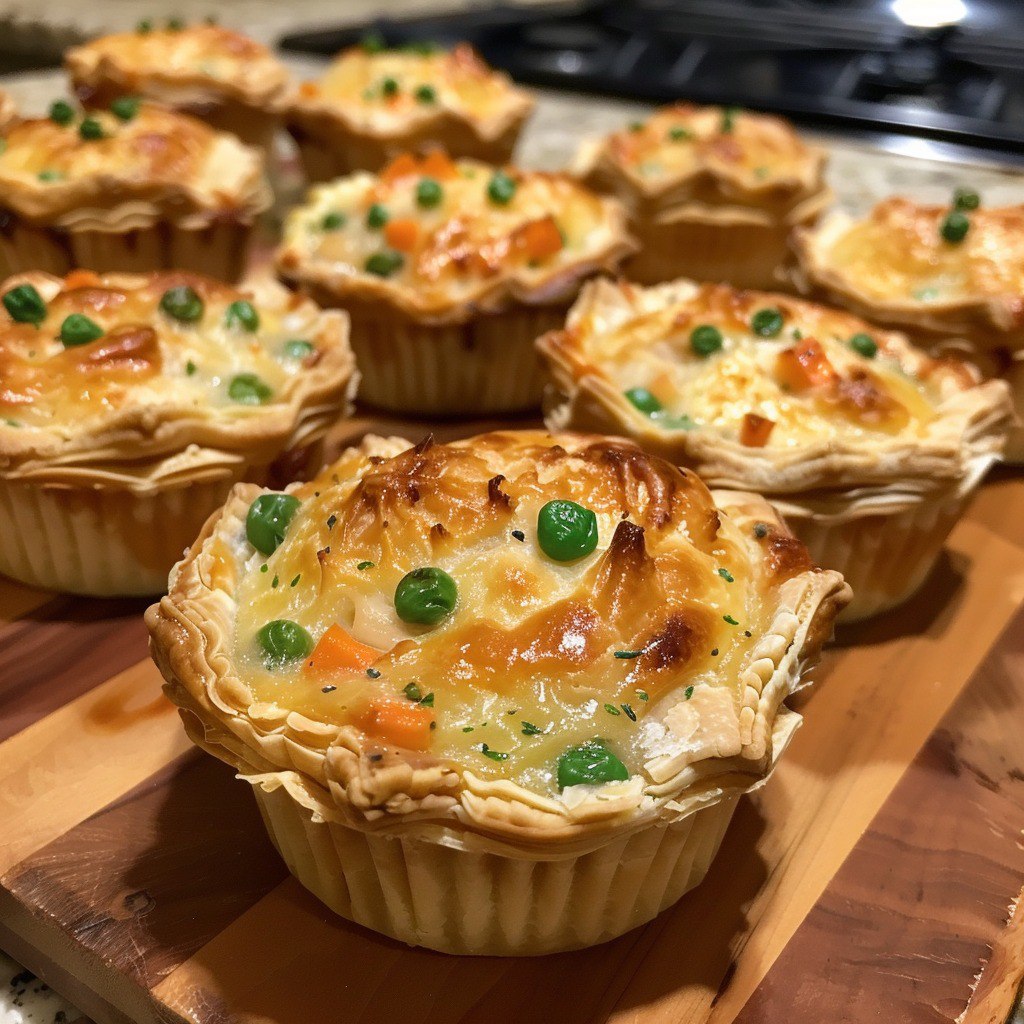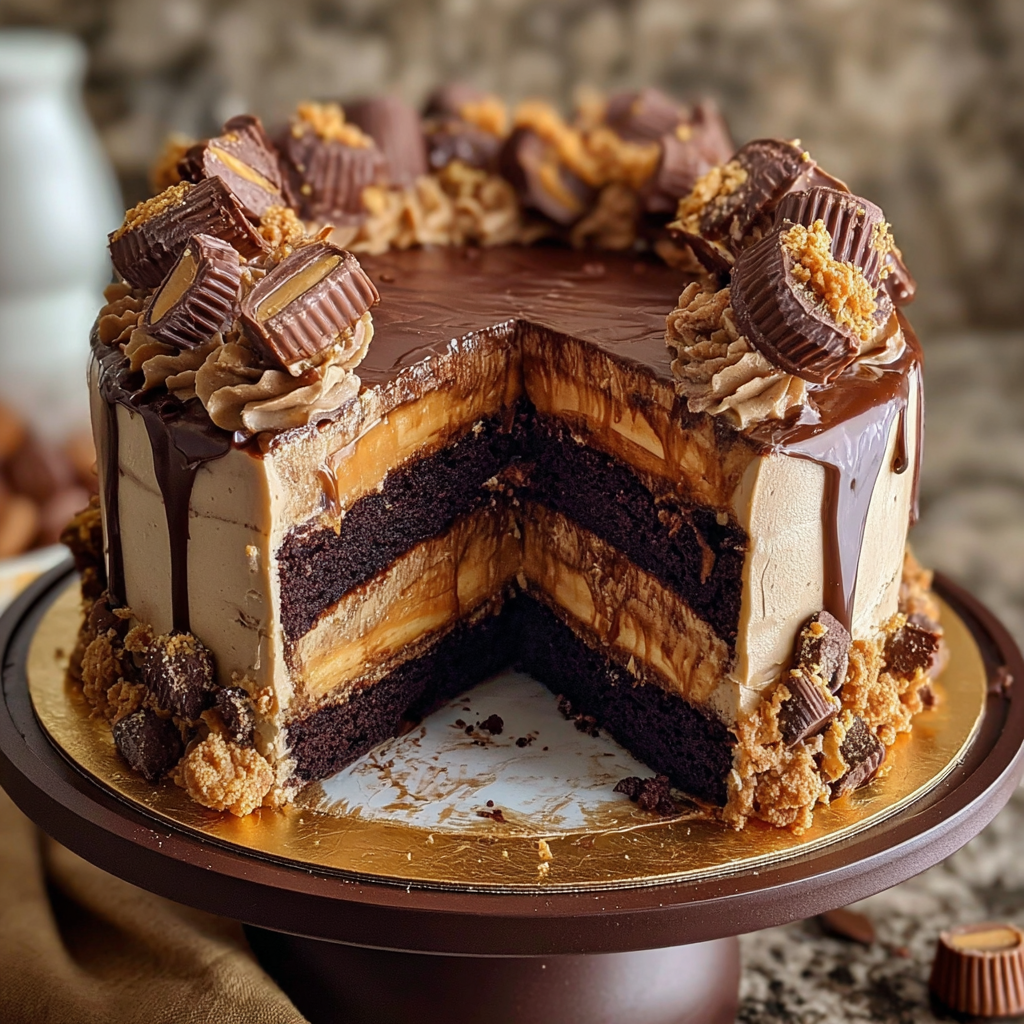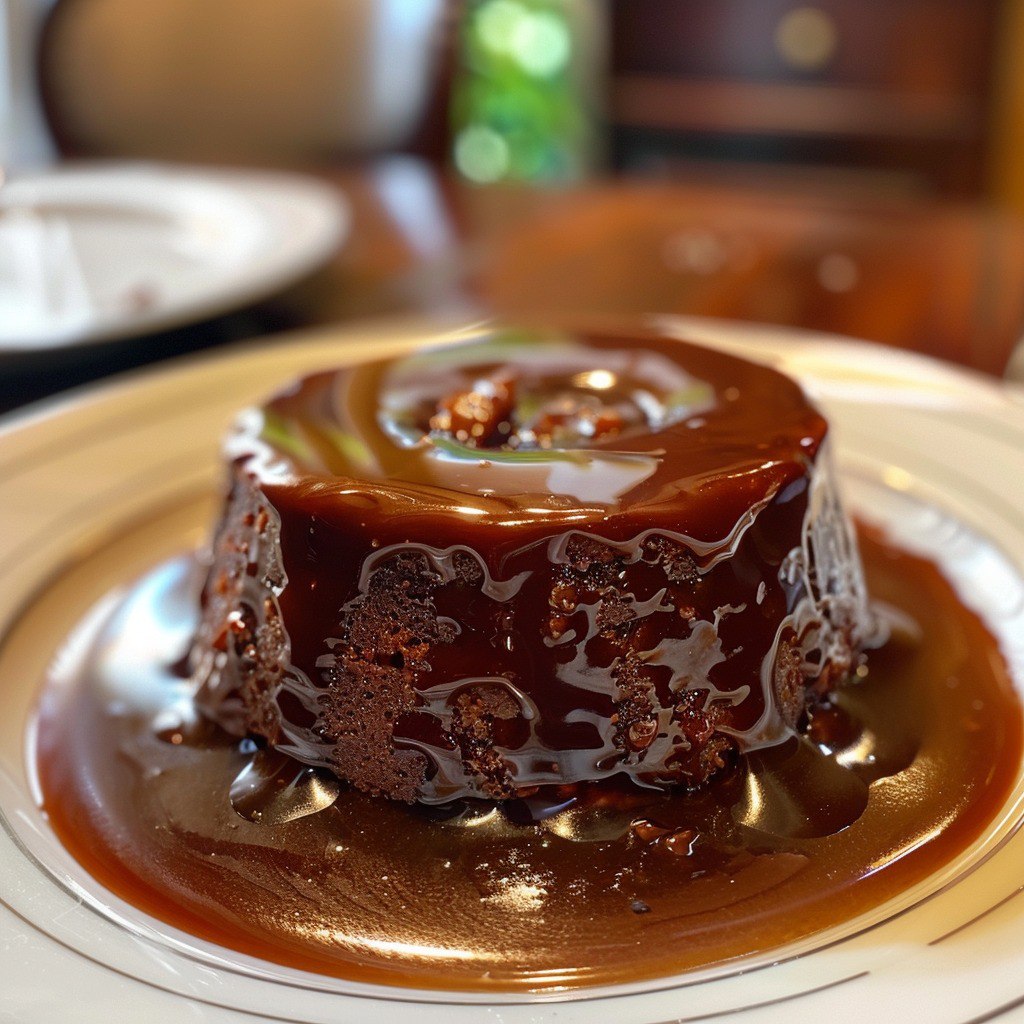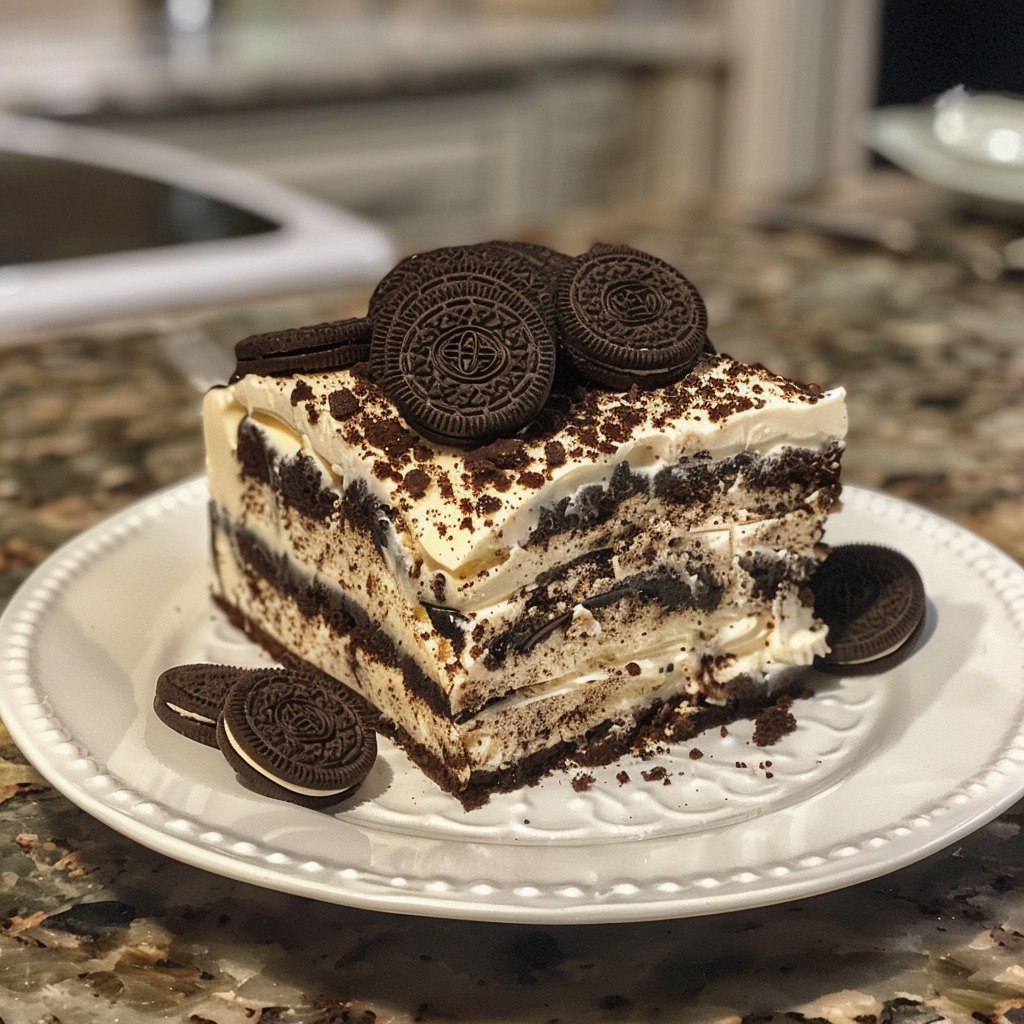Nothing compares to the intoxicating aroma of fresh-baked bread wafting through your kitchen. Moreover, when that bread happens to be Grandma’s Banana Bread, you’re experiencing pure culinary nostalgia. Furthermore, this timeless recipe transforms overripe bananas into golden, moist perfection that speaks directly to the soul.
Additionally, this classic comfort food represents more than just baking – it’s about creating memories and continuing family traditions. Therefore, every slice carries the warmth of generations past and the promise of future gatherings. Moreover, the simple ingredients combine to create something truly magical that modern recipes struggle to replicate.
In fact, Grandma’s Banana Bread proves that the best recipes don’t need complicated techniques or exotic ingredients. Furthermore, this beloved classic delivers consistent results that satisfy both novice bakers and experienced kitchen veterans. Therefore, let’s explore why this particular recipe has stood the test of time.
Why You’ll Love This Traditional Banana Bread Recipe
This exceptional recipe offers countless benefits that make it a staple in kitchens worldwide. Moreover, each advantage contributes to its enduring popularity across generations.
Simplicity That Delivers Outstanding Results
• Foolproof technique: Even beginners achieve bakery-quality results consistently • Pantry-friendly ingredients: Most items are already in your kitchen • Minimal equipment needed: Just basic bowls and measuring tools required • Quick preparation time: Only 15 minutes of active work
Versatility for Every Occasion
• Perfect for breakfast: Nutritious start to any day • Afternoon snack solution: Satisfies cravings without guilt • Dessert alternative: Sweet ending to family meals • Gift-worthy quality: Impressive enough for special occasions
Economic and Practical Benefits
• Uses overripe bananas: Prevents food waste while creating deliciousness • Freezer-friendly results: Make ahead for busy weeks • Large yield potential: Feeds families or feeds crowds easily • Cost-effective baking: Inexpensive ingredients create premium results
Nutritional Value That Surprises
• Natural fruit sweetness: Bananas reduce need for excessive added sugar • Potassium powerhouse: Essential mineral for heart health • Fiber content boost: Supports digestive wellness naturally • Energy-providing carbohydrates: Sustained fuel for active lifestyles
Essential Ingredients for Perfect Banana Bread Success
Understanding each ingredient’s role ensures consistent, delicious results every time. Furthermore, quality ingredients make the difference between good and extraordinary banana bread.
The Star: Perfectly Ripe Bananas
Overripe bananas are absolutely crucial for authentic Grandma’s Banana Bread flavor. Additionally, brown spots indicate peak sweetness and optimal texture. Furthermore, very ripe bananas mash easily and distribute evenly throughout the batter.
Moreover, bananas provide natural moisture that keeps bread tender for days. Therefore, never substitute firm, yellow bananas – they lack the concentrated sweetness. However, if your bananas aren’t quite ready, accelerate ripening by storing in paper bags.
Butter: The Foundation of Flavor
Unsalted butter creates the rich, tender crumb that defines quality banana bread. Additionally, melted butter incorporates more easily than softened butter. Furthermore, this technique ensures even distribution throughout the batter.
Moreover, real butter provides irreplaceable flavor that margarine simply cannot match. Therefore, invest in quality butter for noticeably better results. However, ensure butter is melted but not hot when adding to prevent cooking the eggs.
Sugar Balance: Sweet Perfection
The combination of granulated and brown sugar creates complex sweetness. Additionally, brown sugar contributes moisture and subtle molasses notes. Furthermore, this dual approach prevents one-dimensional sweetness that can become cloying.
Moreover, the sugar ratio perfectly complements the banana’s natural sweetness. Therefore, resist the temptation to reduce sugar significantly. However, slight adjustments can accommodate personal preferences without compromising texture.
Flour and Leavening: Structure and Rise
All-purpose flour provides the ideal protein content for tender banana bread. Additionally, too much protein creates tough, chewy results. Furthermore, measuring flour correctly prevents dense, heavy loaves.
Meanwhile, baking soda reacts with the banana’s natural acids to create lift. Moreover, this chemical reaction contributes to the bread’s characteristic texture. Therefore, ensure baking soda is fresh for optimal rising power.
Step-by-Step Guide to Baking Grandma’s Banana Bread
Creating this masterpiece involves simple steps that deliver consistently excellent results. Moreover, following proper technique ensures your bread matches Grandma’s original quality.
Step 1: Preparation and Organization
Begin by preheating your oven to 350°F (175°C) for even baking. Additionally, grease a 9×5 inch loaf pan thoroughly to prevent sticking. Furthermore, gather all ingredients and tools before starting the mixing process.
Next, mash bananas to your preferred consistency using a fork or potato masher. Moreover, slightly chunky texture adds pleasant variations in each bite. However, ensure no large pieces remain that could create uneven baking.
Meanwhile, measure all dry ingredients accurately using proper techniques. Additionally, whisk flour to eliminate any lumps that could affect texture. Furthermore, having everything ready streamlines the mixing process significantly.
Step 2: Creating the Perfect Wet Mixture
In a large mixing bowl, whisk together melted butter with both sugars until well combined. Additionally, this step dissolves the sugars and creates a smooth base. Furthermore, proper mixing at this stage prevents grittiness in the finished bread.
Next, add mashed bananas to the butter-sugar mixture, stirring until incorporated. Moreover, the natural banana moisture begins creating the bread’s characteristic tenderness. However, avoid overmixing, which can develop gluten unnecessarily.
Then, add eggs one at a time, mixing well after each addition. Additionally, room temperature eggs incorporate more easily than cold ones. Furthermore, add vanilla extract for depth and aromatic appeal that enhances the overall flavor profile.
Step 3: Combining Wet and Dry Ingredients for Banana Bread Success
In a separate bowl, whisk together flour, baking soda, and salt until evenly distributed. Additionally, this step ensures leavening and salt distribute uniformly. Furthermore, proper mixing prevents pockets of concentrated flavors or textures.
Gradually add dry ingredients to the wet mixture, stirring just until combined. Moreover, overmixing develops gluten, creating tough, dense bread. Therefore, stop mixing immediately when flour disappears into the batter.
Finally, fold in chopped nuts if using, distributing them evenly throughout. Additionally, nuts add textural interest and complementary flavors. However, ensure pieces aren’t too large, which could interfere with slicing.
Step 4: Baking to Golden Perfection
Pour batter into your prepared loaf pan, spreading evenly with a spatula. Additionally, gently tap the pan to release air bubbles that could create holes. Furthermore, smooth the top slightly for even browning during baking.
Place in the preheated oven and bake for 60-65 minutes without opening the door. Moreover, frequent door opening releases heat and affects rising. Therefore, resist the urge to check until the minimum time passes.
Test doneness by inserting a toothpick into the center – it should emerge clean or with just a few moist crumbs. Additionally, the top should be golden brown and spring back when lightly touched. Furthermore, properly baked bread pulls slightly from the pan edges.
Pro Tips for the Best Banana Bread Results
These expert techniques elevate your bread from good to absolutely extraordinary. Moreover, small details make significant differences in texture, flavor, and appearance.
Banana Selection and Preparation Secrets
Choose bananas with brown spots covering at least 50% of the skin. Additionally, these bananas offer maximum sweetness and easy mashing. Furthermore, extremely overripe bananas work even better than moderately ripe ones.
If bananas aren’t ripe enough, accelerate the process artificially. Moreover, bake whole bananas at 300°F for 15-20 minutes until skin darkens. However, let them cool completely before peeling and mashing.
Mixing Technique Mastery
Room temperature ingredients combine more easily and create smoother batters. Additionally, take eggs and any refrigerated items out 30 minutes before baking. Furthermore, this simple step prevents lumpy batters and ensures even mixing.
Mix wet ingredients thoroughly before adding any dry components. Moreover, this creates a stable emulsion that holds together better. Therefore, spend extra time on this crucial foundation step.
Baking Environment Optimization
Position your oven rack in the center for even heat circulation. Additionally, avoid placing pans too close to heating elements. Furthermore, consistent temperature throughout baking ensures even browning and proper rising.
Use an oven thermometer to verify actual temperature accuracy. Moreover, many ovens run hot or cold, affecting baking times. Therefore, adjust accordingly for your specific equipment.
Creative Variations for Your Banana Bread Adventures
This versatile base recipe adapts beautifully to countless flavor combinations. Moreover, simple modifications create entirely new taste experiences while maintaining the classic’s beloved characteristics.
Chocolate Lovers’ Banana Bread Variations
Replace nuts with chocolate chips for rich, indulgent results. Additionally, use semi-sweet chips to balance the banana’s sweetness. Furthermore, mini chips distribute more evenly than large chunks.
Add cocoa powder to create double chocolate banana bread. Moreover, substitute 1/4 cup flour with unsweetened cocoa powder. However, increase liquid slightly to compensate for cocoa’s drying effect.
Spice-Enhanced Banana Bread Options
Incorporate warm spices like cinnamon, nutmeg, or cardamom for aromatic complexity. Additionally, start with 1/2 teaspoon of your chosen spice. Furthermore, these additions complement banana’s natural sweetness beautifully.
Try chai-inspired combinations using cinnamon, ginger, and cloves together. Moreover, these warming spices create sophisticated flavor profiles. However, balance is key – avoid overwhelming the banana base.
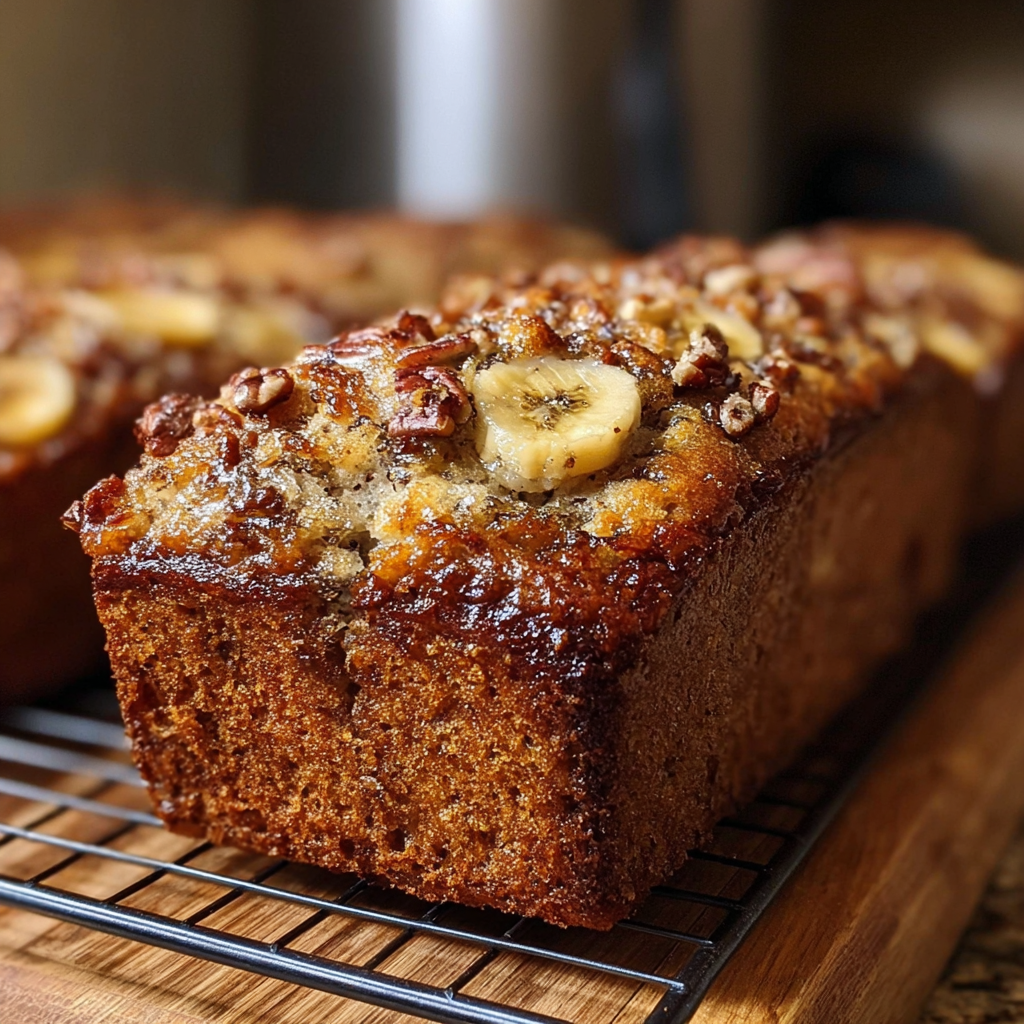
Healthy Adaptation Strategies
Substitute half the all-purpose flour with whole wheat flour for added nutrition. Additionally, this modification increases fiber content significantly. Furthermore, the nutty flavor complements bananas naturally.
Replace some sugar with unsweetened applesauce for moisture without excess sweetness. Moreover, this substitution reduces calories while maintaining texture. However, don’t replace more than 1/4 of the total sugar content.
Fruit and Nut Combination Ideas
Add dried cranberries or raisins for chewy texture and tart flavor contrast. Additionally, these fruits provide natural sweetness and visual appeal. Furthermore, soak dried fruits briefly to prevent moisture absorption during baking.
Combine different nuts for complex flavors and varied textures. Moreover, toasted nuts offer deeper, richer flavors than raw versions. Therefore, consider toasting walnuts or pecans before incorporating them.
Common Mistakes to Avoid When Making Banana Bread
Learning from typical errors saves time and prevents disappointing results. Moreover, awareness of these pitfalls ensures consistent success with every batch.
Banana-Related Problems
Using underripe bananas creates bland, less sweet bread. Additionally, firm bananas don’t mash properly, creating lumpy textures. Furthermore, the natural sugars haven’t fully developed in unripe fruit.
Conversely, extremely mushy bananas can make batter too wet. Moreover, excess moisture affects rising and creates dense results. Therefore, drain very liquid bananas before measuring and using.
Mixing and Measurement Mistakes
Overmixing develops gluten, creating tough, dense bread instead of tender results. Additionally, stop mixing immediately when ingredients just combine. Furthermore, a few flour streaks are better than overworked batter.
Incorrect flour measurement dramatically affects texture and consistency. Moreover, too much flour creates dry, crumbly bread. Therefore, use proper measuring techniques – spoon flour into cups and level off.
Baking Temperature and Timing Errors
Opening the oven door too early causes temperature fluctuations and affects rising. Additionally, bread may collapse if disturbed during crucial rising periods. Furthermore, resist curiosity until minimum baking time passes.
Underbaking creates gummy, wet centers that never properly set. Moreover, overbaking results in dry, crumbly bread that lacks moisture. Therefore, test doneness carefully using toothpick tests and visual cues.
Storage and Cooling Issues
Cutting bread before complete cooling releases steam and creates gummy textures. Additionally, hot bread falls apart and doesn’t slice cleanly. Furthermore, patience during cooling ensures optimal texture and appearance.
Improper storage leads to rapid staleness or mold development. Moreover, airtight containers maintain moisture while preventing contamination. Therefore, wrap cooled bread properly for maximum freshness.
Storage Solutions and Make-Ahead Strategies
Proper storage maintains quality and extends enjoyment significantly. Moreover, understanding preservation techniques helps you plan ahead for busy schedules or special occasions.
Short-Term Storage for Maximum Freshness
Wrap cooled banana bread tightly in plastic wrap or aluminum foil. Additionally, this prevents moisture loss while maintaining soft texture. Furthermore, properly wrapped bread stays fresh at room temperature for 3-4 days.
Store in airtight containers for easy access and portion control. Moreover, slice before storing for convenient grab-and-go options. However, whole loaves maintain moisture better than pre-sliced versions.
Long-Term Freezing Techniques
Freeze whole loaves or individual slices wrapped in plastic, then aluminum foil. Additionally, double wrapping prevents freezer burn and maintains quality. Furthermore, label packages with date and contents for easy identification.
Frozen banana bread maintains quality for up to three months. Moreover, thaw overnight in refrigerator for best texture. However, room temperature thawing works for quicker needs.
Make-Ahead Preparation Options
Mix dry ingredients in advance and store in airtight containers. Additionally, this saves time on busy baking days. Furthermore, pre-measured ingredients ensure consistency and reduce errors.
Prepare batter and refrigerate overnight before baking. Moreover, this technique can actually improve flavor development. However, add a few extra minutes to baking time for cold batter.
Serving Suggestions and Presentation Ideas for Banana Bread
Thoughtful presentation elevates this humble bread to special occasion status. Moreover, creative serving ideas enhance the eating experience and create memorable moments.
Temperature and Texture Options
Serve warm banana bread with butter melting into each slice. Additionally, gentle warming in low ovens restores just-baked texture. Furthermore, avoid microwaving, which can create uneven heating and tough spots.
Room temperature bread showcases the pure flavors without temperature interference. Moreover, this allows the full flavor profile to emerge naturally. Therefore, both serving temperatures offer distinct pleasures.
Spread and Topping Combinations
Classic butter remains the perfect complement to banana bread’s flavors. Additionally, honey butter adds natural sweetness that enhances the fruit notes. Furthermore, cinnamon butter creates bakery-style indulgence.
Cream cheese provides tangy contrast to the bread’s sweetness. Moreover, flavored cream cheeses like vanilla or strawberry create dessert-like experiences. However, plain cream cheese offers the best flavor balance.
Beverage Pairing Recommendations
Coffee creates the perfect morning combination with banana bread’s comforting flavors. Additionally, the bitter notes complement the bread’s sweetness beautifully. Furthermore, both provide energy for active mornings.
Tea offers more delicate pairing options that don’t compete with subtle flavors. Moreover, chai spices echo common banana bread additions. Therefore, experiment with different tea varieties for variety.
Nutritional Benefits and Health Considerations
Understanding the nutritional profile helps make informed dietary decisions. Moreover, banana bread offers surprising health benefits alongside its comfort food appeal.
Beneficial Nutrients from Key Ingredients
Bananas provide potassium, essential for heart health and blood pressure regulation. Additionally, they contain vitamin B6, important for brain function. Furthermore, natural fruit sugars offer quick energy without processed sugar spikes.
Nuts contribute healthy fats, protein, and important minerals like magnesium. Moreover, these nutrients support heart health and cognitive function. Therefore, including nuts enhances both flavor and nutrition significantly.
Caloric Content and Portion Awareness
Each slice contains approximately 200 calories, making it a reasonable treat option. Additionally, the complex carbohydrates provide sustained energy release. Furthermore, natural fruit content offers more nutrition than empty-calorie alternatives.
Standard recipes yield 12-16 slices depending on cutting thickness. Moreover, smaller portions allow guilt-free enjoyment more frequently. However, larger slices satisfy bigger appetites and heartier needs.
Dietary Modification Possibilities
Reduce sugar content by up to 25% without significantly affecting texture. Additionally, very ripe bananas provide natural sweetness compensation. Furthermore, this modification reduces overall caloric density.
Substitute whole grain flours for increased fiber and protein content. Moreover, these alternatives add nutty flavors that complement bananas naturally. However, expect slightly denser textures with healthier flour options.
Troubleshooting Common Banana Bread Problems
Even experienced bakers encounter occasional issues with this classic recipe. Moreover, understanding solutions prevents waste and ensures consistent results.
Dense, Heavy Texture Issues
Overmixing develops too much gluten, creating tough, dense results. Additionally, measure flour accurately to prevent excessive dry ingredients. Furthermore, gentle folding motions preserve tender texture.
Old baking soda loses potency and affects rising significantly. Moreover, replace baking soda every six months for optimal results. Therefore, fresh leavening agents ensure proper texture development.
Dry, Crumbly Consistency Problems
Insufficient banana content creates dry, less flavorful bread. Additionally, very ripe bananas provide necessary moisture for tender results. Furthermore, don’t reduce banana quantity to accommodate personal preferences.
Overbaking removes moisture and creates crumbly textures. Moreover, test doneness early and monitor closely during final minutes. Therefore, slightly underbaked bread finishes cooking from residual heat.
Uneven Baking and Appearance Issues
Hot spots in ovens create uneven browning and cooking. Additionally, rotating pans halfway through baking promotes even results. Furthermore, oven thermometers help identify temperature inconsistencies.
Incorrect pan size affects baking time and final appearance. Moreover, 9×5 inch pans provide optimal depth and cooking time. Therefore, adjust timing if using different sized pans.
FAQs About Grandma’s Banana Bread
These commonly asked questions address frequent concerns and curiosities. Moreover, detailed answers help ensure baking success and troubleshoot potential issues.
Q: Can I make this banana bread recipe without eggs?
A: Yes, several substitutions work well for egg-free versions. Moreover, replace each egg with 1/4 cup applesauce or mashed banana. Additionally, commercial egg replacers follow package directions for equivalent amounts. Furthermore, these substitutions maintain moisture while binding ingredients effectively.
Q: How do I know when my banana bread is perfectly done?
A: Multiple indicators confirm proper doneness for consistent results. Additionally, toothpick tests should show clean removal or just moist crumbs. Furthermore, the top springs back when lightly touched, and edges pull slightly from pan sides. Moreover, internal temperature should reach 200°F for complete cooking.
Q: Can I add chocolate chips to this traditional banana bread recipe?
A: Absolutely! Chocolate chips make excellent additions to classic banana bread. Moreover, use about 1/2 to 3/4 cup of semi-sweet or dark chocolate chips. Additionally, toss chips in flour before folding in to prevent sinking. Furthermore, mini chips distribute more evenly than larger varieties.
Q: What’s the best way to ripen bananas quickly for banana bread?
A: Several methods accelerate banana ripening effectively. Moreover, place bananas in paper bags with apples or tomatoes overnight. Additionally, bake whole bananas at 300°F until skins darken significantly. Furthermore, microwave individual bananas for 30-60 seconds, though texture changes slightly.
Q: How long does homemade banana bread stay fresh?
A: Properly stored banana bread maintains quality for several days. Additionally, room temperature storage keeps bread fresh for 3-4 days wrapped tightly. Furthermore, refrigerated bread lasts up to one week but may become slightly drier. Moreover, frozen bread maintains quality for up to three months.
Q: Can I reduce the sugar in Grandma’s banana bread recipe?
A: Yes, moderate sugar reduction is possible without major texture changes. Moreover, reduce total sugar by up to 25% if using very ripe bananas. Additionally, the natural fruit sweetness compensates for some reduction. However, sugar affects texture and browning, so don’t reduce excessively.
Q: Why did my banana bread sink in the middle?
A: Several factors cause banana bread to collapse during or after baking. Moreover, overmixing develops too much gluten, creating unstable structure. Additionally, opening oven doors too early releases heat and affects rising. Furthermore, old baking soda lacks sufficient leavening power for proper rise.
Conclusion: Embracing the Timeless Appeal of Banana Bread
Grandma’s Banana Bread represents more than just a recipe – it’s a connection to culinary heritage and family traditions. Moreover, this beloved classic proves that simple ingredients, when combined with proper technique, create extraordinary results that satisfy both body and soul. Furthermore, the recipe’s enduring popularity speaks to its perfect balance of flavors, textures, and nostalgic appeal.
Additionally, mastering this fundamental recipe opens doors to countless variations and creative adaptations. Therefore, consider this your foundation for exploring quick bread baking and developing your own family traditions. Moreover, the skills learned here translate to many other baking projects and culinary adventures.
Print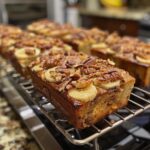
Grandma’s Banana Bread: The Ultimate Comfort Food That Never Goes Out of Style
- Total Time: 1H 20 mnt
Description
Savor the nostalgia with Grandma’s Banana Bread, a timeless classic that brings warmth and comfort with every bite. Perfectly moist and bursting with banana flavor, this recipe is a family favorite!
Ingredients
3 ripe bananas, mashed
1/2 cup unsalted butter, melted
1/2 cup granulated sugar
1/2 cup brown sugar
2 large eggs
1 teaspoon vanilla extract
1 1/2 cups all-purpose flour
1 teaspoon baking soda
1/2 teaspoon salt
1/2 cup chopped walnuts or pecans (optional)
Instructions
Preheat your oven to 350°F (175°C). Grease a 9×5 inch loaf pan.
In a large bowl, whisk together melted butter, granulated sugar, and brown sugar until well combined.
Add mashed bananas, eggs, and vanilla extract to the butter-sugar mixture. Mix until smooth.
In a separate bowl, whisk together flour, baking soda, and salt.
Gradually add the dry ingredients to the wet ingredients, mixing until just combined. Do not overmix.
Fold in chopped nuts, if using.
Pour the batter into the prepared loaf pan and spread evenly.
Bake for 60-65 minutes, or until a toothpick inserted into the center comes out clean.
Remove from the oven and let cool in the pan for 10 minutes before transferring to a wire rack to cool completely.
Notes
Grandma’s Banana Bread is more than just a recipe—it’s a taste of tradition and love baked into every slice. Enjoy it warm with a pat of butter or as a sweet treat any time of day!

